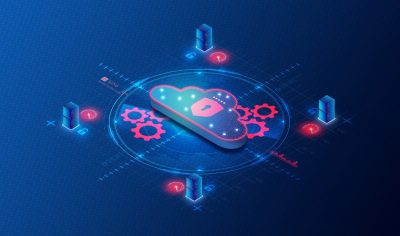As the business takes a step towards global understanding and project implementation for them it’s a two-way highway. Data in offshore database proliferates the risk of theft and disruption due to disaster. The current advances in the technology and computing platform have enabled the creation of complete disaster recovery as a service (DRaaS) solutions that are making way for enterprises to prepare a data backup. The enterprises around the world, however, need to be careful while dealing with such technology adoption that will a big part of the business. As more and more enterprises are looking towards the remote location database as an option, they are also focusing on developing a DRaaS according to the business requirement. According to the recent figures the enterprises that are adopting the disaster recovery as a service were valued close to $1.94 billion in 2017 and with ever-increasing demand, we could see the figure reach $13.74 Billion by 2023. The increased demand for DraaS has led a major focus towards the service providers, Gartner in 2017 predicted it would reach close to $2 billion in 2017 and would soon reach close to $3.5 billion by 2021. Many of the business leaders have said that as the data becomes the currency of growth you cannot just rely on a single database to store all the data, such type of questions have made DRaaS a disruptive technology.
Currently, when you look towards the Disaster Recovery as a Service you see two option emerging there is a small group of generally larger businesses that have a traditional Disaster recovery solution in place, a complete duplication of their IT infrastructure. It will either be a second data recovery space they are using or a third party service provider. The second type of enterprises are the ones with wherein they can recover the backup but suddenly you see no hardware in place and during the disruption, the recovery is done by adding the hardware components. Many major organizations had already implanted the disaster recovery as a solution for the data backup but with a reduction in cost, the second group is also coming in.
Identifying need
DRaaS usually occurs when the business wants its data to be stable irrespective of the threats but the current infrastructure and resources cannot handle the expertise internally. Often we see that the existing solutions providers are not prepared during the emergence of recovery need, they tend to go through the list of steps and suddenly we find a breakdown. Most the enterprises are still questioning whether it’s better to build or to buy such a solution. The building works require much more effort wherein we see the hardware buying cycle and software installation along with troubleshooting and then managing the recovery. The threshold for such development is a few hundred server marks but with a reduction in cloud service, we see a reduction in cost as a service.
Working of DRaaS and Benefits
DRaaS usually follows a clear and consistent procedure while it’s implemented for any enterprise. They first have all the technical requirements laid out, then we determine through the legislative requirement and the current constraints that are there before designing. The solution needs to reliable and predictable. The current creation of on-demand and a cloud-based replica that completely replicate the operational IT environment in case of disaster must happen under a rapid pace. Any Disaster recovery solution should be continuously tested and derived to keep a tap towards development. According to the current views, disasters do occur but how prepared are the organizations to deal with such a challenge. DRaaS is an effective plan that needs to be continuously planned, tested and monitored under the lens. Disaster recovery also gives a solution to the enterprises to drive the business value rather than implementing various risks and mitigation.
Conclusion
Many of the enterprises that have already implemented the DRaaS add that they should be backed with service level agreements and should be tested at least twice during an annual year. The tests should be able to show the complete data recovery solution that can be done within a few minutes and how the internet connectivity reacts to it. It’s also important that the disaster recovery book is constantly updated to ensure and the non–distributive approach is being followed during the testing process.
To know more, you can download our recent whitepapers on Infra solutions.






































































